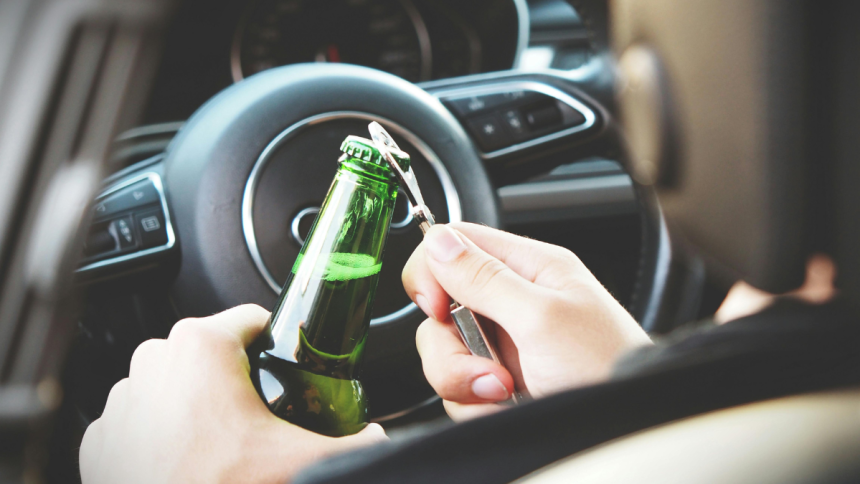Introduction.
Being stopped by the police and asked to take a breath test can be a daunting experience. If that test returns a positive result, you might find yourself facing a drink driving charge, an offence that carries significant legal, financial, and personal consequences in New South Wales. These charges are not only serious in the eyes of the law, but they can also impact your employment, insurance, and reputation.
If you or someone you know has been charged with drink driving, it’s essential to understand your legal rights and the potential outcomes under New South Wales legislation. Seeking timely legal assistance, especially from experienced practitioners such as Gosford defence lawyers or Coffs Harbour criminal lawcan make a crucial difference in how your case is managed and resolved.
Legal Framework: How Drink Driving is Prosecuted in NSW.
Drink driving is prosecuted under the Road Transport Act 2013 (NSW). This legislation sets out the different categories of offences based on blood alcohol concentration (BAC), the corresponding penalties, and enforcement mechanisms such as random breath testing.
These offences are considered serious and are dealt with by the Local Court in most cases. The framework aims to protect public safety, deter dangerous behaviour, and encourage rehabilitation where possible. It’s also important to note that regional areas may have unique local enforcement strategies and sentencing tendencies.
Categories of Drink Driving Offences.
In New South Wales, drink driving offences are categorised into specific ranges based on the BAC detected at the time of testing. These categories dictate the severity of charges and applicable penalties:
Low-Range PCA.
A BAC of 0.05 to less than 0.08.
Penalties can include:
- Maximum fine of $2,200.
- Licence disqualification of 3–6 months.
- Possible participation in the alcohol interlock program.
Mid-Range PCA.
A BAC of 0.08 to less than 0.15.
Penalties may include:
- Up to 9 months imprisonment.
- Fine of up to $2,200.
- Disqualification from driving.
- Mandatory interlock device installation.
High-Range PCA.
A BAC of 0.15 or more.
Penalties include:
- Up to 18 months imprisonment.
- $3,300 fine.
- Disqualification of licence for a minimum of 6 months.
- Mandatory participation in the interlock program.
These penalties are generally stricter for repeat offenders or where aggravating circumstances apply, such as driving with a minor in the car, involvement in an accident, or excessive speeding.
Police Powers and Legal Procedures.
The Road Transport Act 2013 grants NSW police the authority to conduct random breath tests without requiring any suspicion of intoxication. Refusal to undergo a breath test or breath analysis is treated as a serious offence and carries penalties comparable to those for high-range PCA.
Under Section 138 of the Act, police can require any driver to take a roadside breath test. If the result is positive, a formal breath analysis must occur within two hours, as required under Section 148. Any failure to adhere to these strict timing protocols may render evidence inadmissible in court.
Legal Defences Available.
Several legal defences may be available to challenge a drink driving charge, including:
Procedural Irregularities.
If police fail to administer the test properly or do not comply with legal timeframes, charges may be dismissed. For example, in DPP v Bone [2005] NSWSC 1239, the court dismissed charges due to the failure to perform a breath analysis within the required two-hour window.
Not Driving on a Public Road.
The law applies only to public roads and road-related areas. Driving on private property may not fall within the statutory definitions unless it can be shown the area is accessible to the public.
Duress or Necessity.
In rare cases, a person may have been forced to drive due to an emergency, threat, or risk of harm, potentially justifying their actions under duress or necessity.
Legal practitioners with regional court experience can assess the viability of these defences based on the facts and police conduct in your case.
Sentencing Factors and Magistrate Discretion.
Under the Crimes (Sentencing Procedure) Act 1999 (NSW), sentencing decisions are guided by both statutory considerations and case law. Courts weigh mitigating and aggravating factors, including:
- Driving history and criminal record.
- Risk posed to the public.
- Demonstration of remorse.
- Willingness to participate in rehabilitation programs.
The court may also consider granting a Section 10 dismissal or conditional release order, which allows a guilty plea without recording a conviction. This is usually reserved for low-range PCA offences with exceptional mitigating factors, such as no prior history and demonstrated need for a licence.
In R v Whyte (2002) 55 NSWLR 252, the NSW Court of Criminal Appeal stated that deterrence should be the primary objective in sentencing for drink driving offences, especially where the offender has a previous conviction.
Aggravating Circumstances and Compounding Offences.
Additional penalties may be applied when drink driving is combined with other offences, such as:
- Driving under the influence of drugs (DUI).
- Driving while disqualified.
- Causing death or grievous bodily harm.
Under Section 52A of the Crimes Act 1900 (NSW), causing death by negligent driving while under the influence can lead to imprisonment for up to 10 years, or up to 25 years for aggravated offences.
Regional courts may treat such matters with heightened severity due to the limited availability of public transport and higher dependency on personal vehicles.
Impact of a Conviction.
A conviction for drink driving extends far beyond the courtroom:
- Employment: Jobs that require a driver’s licence or clean criminal record may be jeopardised.
- Travel Restrictions: Countries like the USA may deny entry to individuals with a drink-driving record.
- Insurance: Premiums often rise dramatically following a conviction.
- Social Stigma: The reputational damage can affect personal and professional relationships.
These realities highlight the importance of obtaining tailored legal representation, especially from lawyers familiar with sentencing trends and judicial expectations in NSW.
The Interlock Program and Rehabilitation.
For high-range and repeat offenders, courts often impose a mandatory interlock program. Participants must install a breathalyser in their vehicle, which prevents the engine from starting if alcohol is detected. This program is outlined in Part 7.4 of the Road Transport Act 2013 and typically lasts for 12 months.
The court may exempt someone from the program in limited circumstances, but the threshold for approval is high. Enrolment in the Traffic Offender Intervention Program (TOIP) is also strongly recommended and may mitigate sentencing outcomes.
Case law such as R v Purtell [2001] NSWCCA 165 has shown that genuine participation in rehabilitation can lead to more lenient penalties, especially when combined with strong references and a clear personal transformation.
Regional Considerations.
Magistrates in regional courts often balance the broader social impact of drink driving with the practical realities of life in areas with limited public transport. Courts may be stricter about repeat offences but also more supportive of rehabilitation.
Lawyers regularly represent clients in courts where magistrates expect pre-sentencing steps, such as completion of TOIP or voluntary counselling. These local expectations can make a meaningful difference in outcomes and should be factored into case preparation.
Conclusion.
Being charged with drink driving in NSW is a serious matter with long-term consequences. But it is also a process governed by legal principles, statutory limits, and judicial discretion. Taking early steps to understand your rights and obligations, and where possible, seeking rehabilitation, can significantly affect the outcome.
If you’re navigating charges or require local expertise, don’t wait to seek legal advice. The right guidance can clarify your position and help you make informed decisions that protect your future.
Lynn Martelli is an editor at Readability. She received her MFA in Creative Writing from Antioch University and has worked as an editor for over 10 years. Lynn has edited a wide variety of books, including fiction, non-fiction, memoirs, and more. In her free time, Lynn enjoys reading, writing, and spending time with her family and friends.















